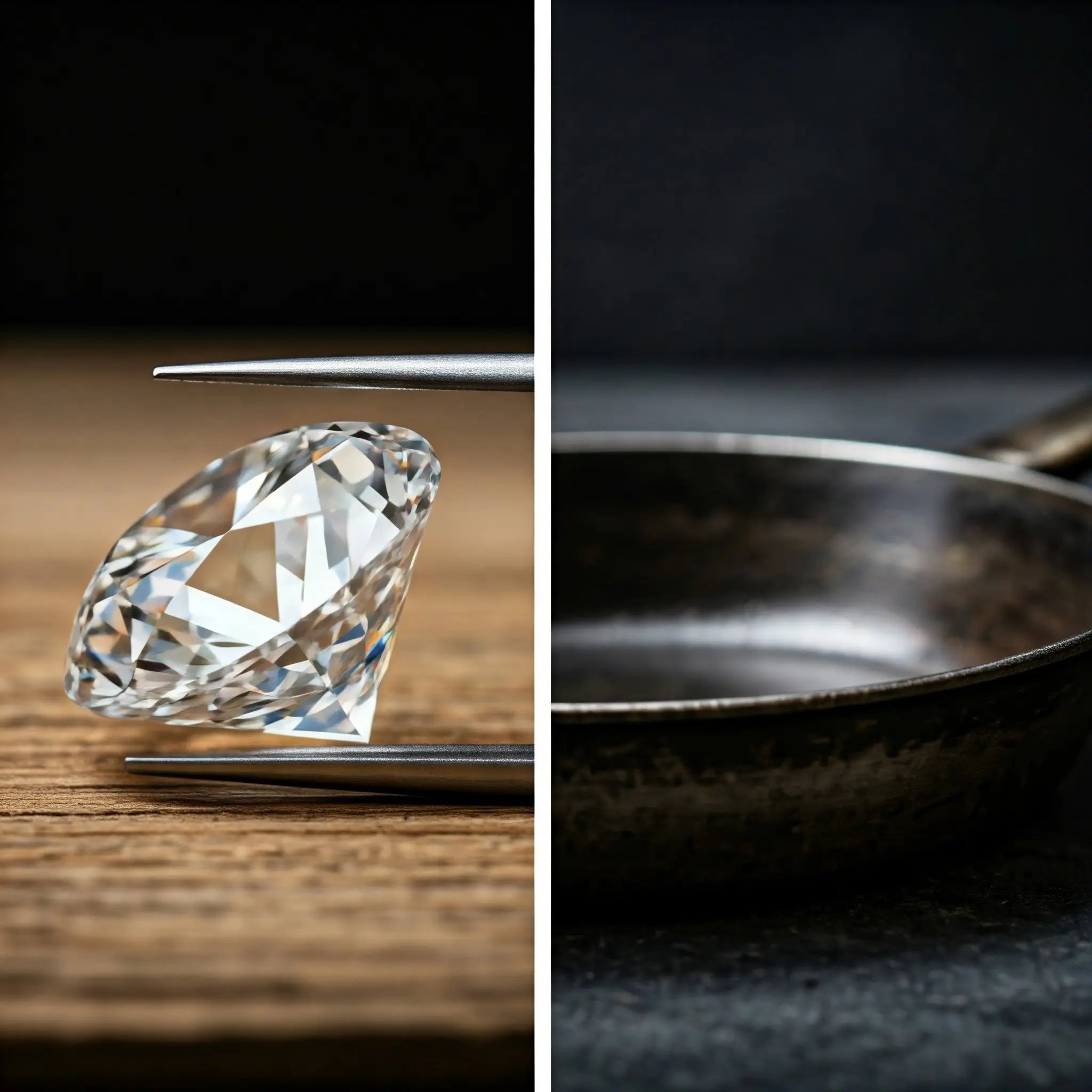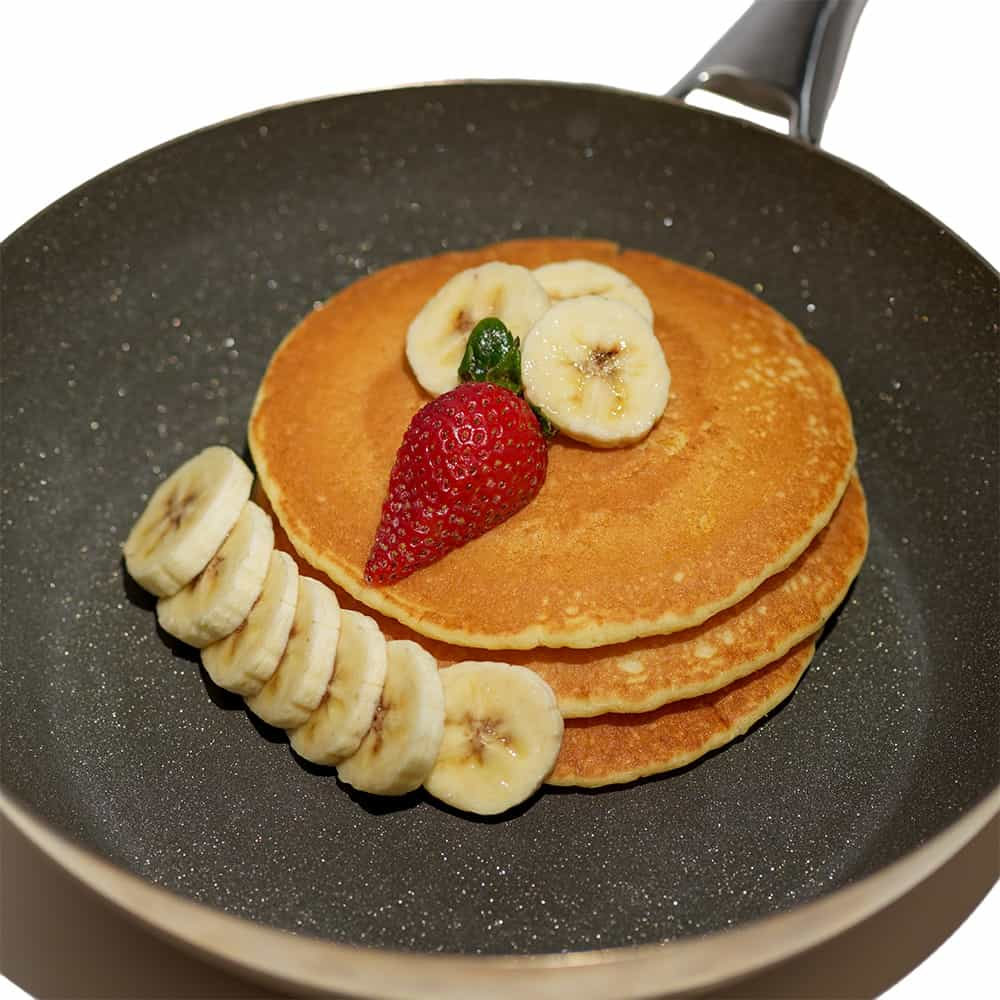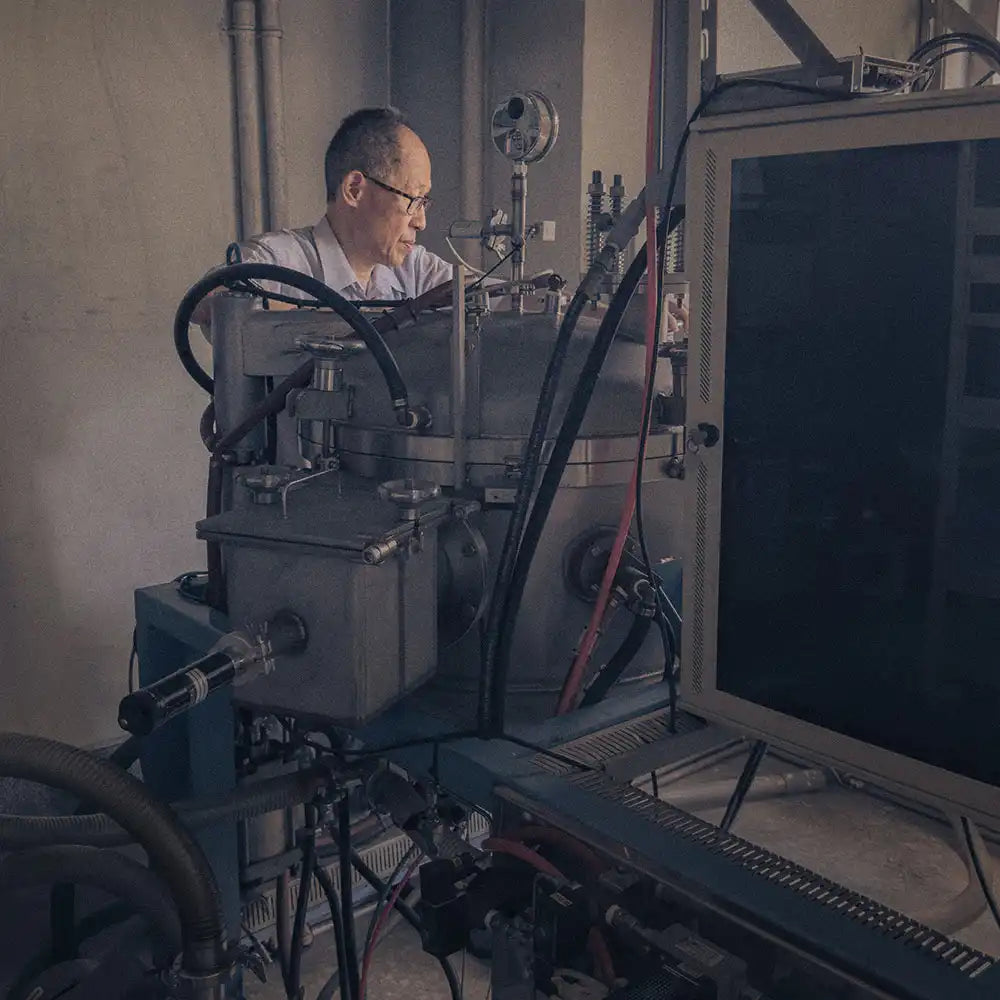
How to Choose Diamond Cookware: Carat Weight Matters Most
When it comes to selecting high-performance diamond cookware, there’s a lot of marketing out there—some emphasize fancy coatings, others highlight brand names, and many tout hardness or heat conduction. While these features have their merits, they often overshadow the single most crucial factor: the actual weight (carats) of real diamonds used in manufacturing the cookware. Let’s clear up the confusion.
Quick Takeaway for Speed Readers
If you remember only one thing, make it this: Always ask how many carats of diamond are in the cookware. More real diamond content generally means:
- Enhanced durability and longevity due to diamond’s unmatched hardness and resilience.[1,2]
- Superior heat distribution that stays consistent over time.[3,4]
- Naturally nonstick properties that don’t degrade like chemical coatings might.[5,6]
Simply put: Higher carat weight = better performance + longer lifespan.

Why Carat Weight Matters So Much
1. Higher Diamond Content Delivers Superior Results
Genuine Hardness: Diamonds rank 10 on the Mohs hardness scale, making them incredibly resistant to scratching. But this advantage is only meaningful if there’s enough diamond present. A cookware surface made with a significant weight (or carat) of diamond creates a tough, scratch-resistant barrier that can handle daily use without wearing down.[2,5]
Practical Durability: High-carat diamond cookware doesn’t just “feel sturdy”—it genuinely lasts longer. By resisting scratches and chips, the pan maintains its nonstick qualities over a much longer period. This means fewer replacements and less waste in the long run.[2,5]
2. Consistent Nonstick Performance
Ultra-Smooth Surface: Diamond’s closely packed carbon atoms create a surface with fewer microscopic “nooks and crannies.”[1,2] When enough diamond is applied to the pan (as in, a higher carat weight), you get a more uniform layer. This smoothness forces liquids and oils to bead up and roll off, rather than grip and burn.
Easy Cleanup: The more diamond present, the fewer the opportunities for food to latch onto the surface. Food particles won’t stick as readily, so a quick rinse or wipe usually does the job.[1,3,5] That translates into less time scrubbing and more time enjoying your meal.
3. Longevity Through Vacuum Brazing
Stronger Bonding Technique: Some manufacturers use “vacuum brazing,” a specialized high-temperature process that permanently fuses diamonds to the metal.[7,8] However, even the best process won’t matter if there’s only a tiny sprinkle of diamond. Adequate carat weight means you have a thick enough layer of diamond to truly benefit from vacuum brazing’s superior bonding.
Withstands Everyday Challenges: From metal spatulas to high-heat searing, higher-carat diamond layers can handle it all. Instead of flaking or wearing off like many coatings, the diamond surface remains durable under normal (and even heavy) kitchen conditions.[7,8]
4. No Magic Without Enough Diamond
Beware of Marketing Gimmicks: Many cookware brands use phrases like “diamond-infused” or “diamond coating” but may only include trace amounts of diamond powder. If the manufacturer can’t or won’t specify the actual carat weight, it might mean the diamond content is too low to offer real benefits.[6,9]
True Performance Tied to Weight: Think of diamond in cookware like a key ingredient in a recipe—the more you have, the more potent the outcome. If the carat weight is minimal, you simply won’t experience the long-term nonstick and durability that a genuine, high-carat diamond layer can provide.[5,6,9]
Asking the Right Questions
The next time you’re shopping for diamond cookware:
- Inquire about Carat Weight: Whether it’s 60 carats, 100 carats, or another figure, the more diamond in the surface, the better.
- Look at Manufacturing Method: Vacuum brazing or similar high-end processes ensure the diamond particles stay put, but they still need enough raw diamond in the mix.
- Avoid “Diamond-Infused” Hype: Marketing terms can be misleading. Always look for a verifiable diamond carat weight or explicit mention of how many milligrams/grams of diamond are used.[5,6]
The Bottom Line
Yes, diamond is hard and a superb heat conductor, but none of that matters if the cookware only sprinkles in an insignificant amount of diamond. Carat weight is the best indicator of how well and how long your diamond cookware will actually perform. Understanding and verifying real diamond content can help you buy a pan that cooks superbly, cleans effortlessly, and lasts for many years—even decades—of everyday use.
References
- Michalski M, Desobry S, Hardy J (1997) Food materials adhesion: a review. Crit Rev Food Sci Nutr 37:591–619.
- Ramiasa M, Ralston J, Fetzer R, Sedev R (2014) The influence of topography on dynamic wetting. Adv Colloid Interface Sci 206:275–293.
- Liu X, Wang L, Qiao Y et al (2018) Adhesion of liquid food to packaging surfaces: mechanisms, test methods, influencing factors and anti-adhesion methods. J Food Eng 228:102–117.
- Zore A, Bezek K, Jevšnik M et al (2020) Bacterial adhesion rate on food grade ceramics and Teflon as kitchen worktop surfaces. Int J Food Microbiol 332:108764.
- Bhandari BR (2007) Stickiness and caking in food preservation. In: Rahman MS (ed) Handbook of Food Preservation. CRC Press, Second Edition, pp 387–401.
- diamondPans, the true diamond cookware.
- Vacuum brazed diamond cookware – More Super Hard Products.
- From Accident to Innovation: World first diamond crystals cookware.
- Diamond Cookware (Is This Worth The Hype?) – The Kitchen Eye.


